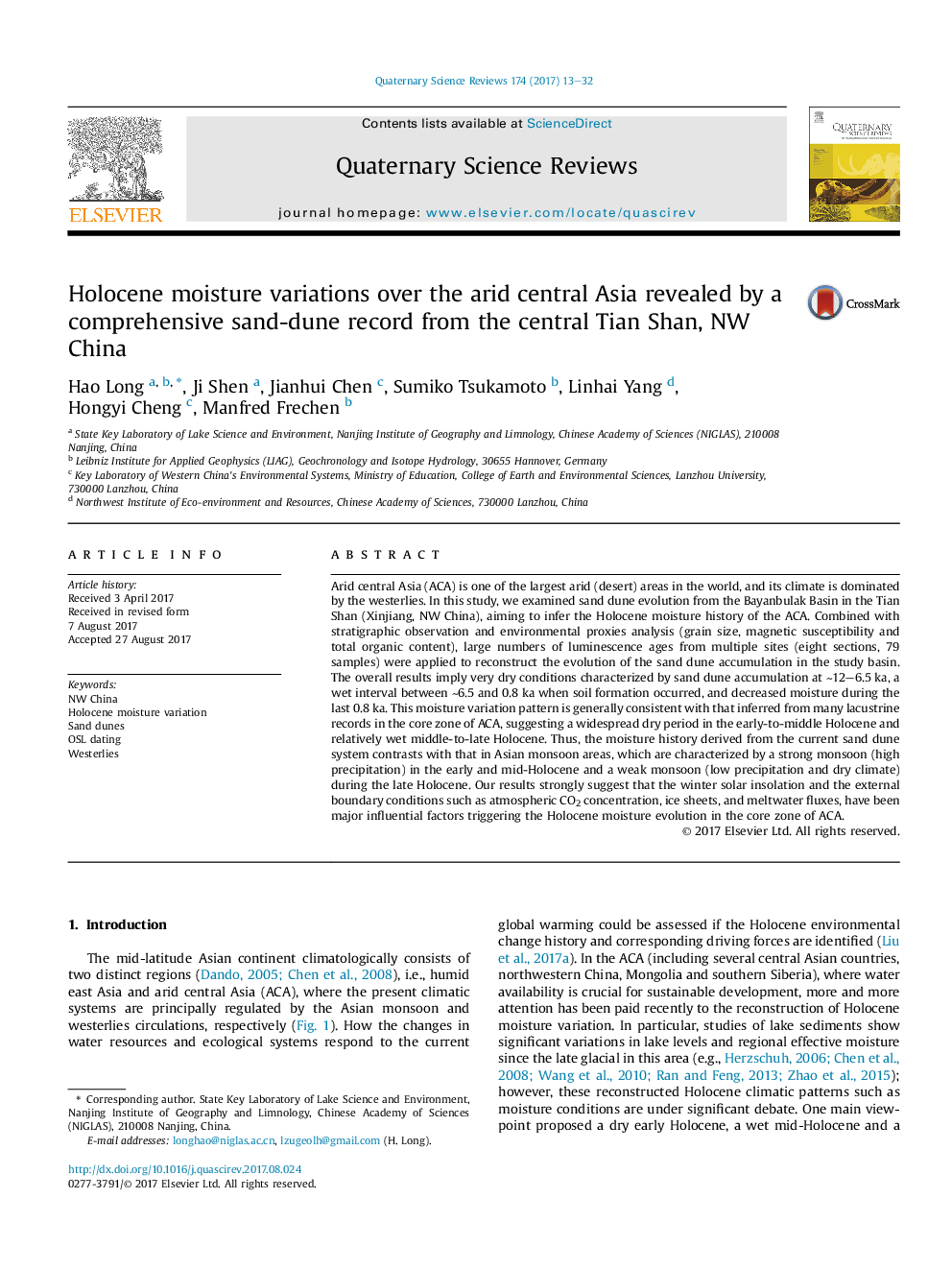| Article ID | Journal | Published Year | Pages | File Type |
|---|---|---|---|---|
| 5786535 | Quaternary Science Reviews | 2017 | 20 Pages |
Abstract
Arid central Asia (ACA) is one of the largest arid (desert) areas in the world, and its climate is dominated by the westerlies. In this study, we examined sand dune evolution from the Bayanbulak Basin in the Tian Shan (Xinjiang, NW China), aiming to infer the Holocene moisture history of the ACA. Combined with stratigraphic observation and environmental proxies analysis (grain size, magnetic susceptibility and total organic content), large numbers of luminescence ages from multiple sites (eight sections, 79 samples) were applied to reconstruct the evolution of the sand dune accumulation in the study basin. The overall results imply very dry conditions characterized by sand dune accumulation at â¼12-6.5 ka, a wet interval between â¼6.5 and 0.8 ka when soil formation occurred, and decreased moisture during the last 0.8 ka. This moisture variation pattern is generally consistent with that inferred from many lacustrine records in the core zone of ACA, suggesting a widespread dry period in the early-to-middle Holocene and relatively wet middle-to-late Holocene. Thus, the moisture history derived from the current sand dune system contrasts with that in Asian monsoon areas, which are characterized by a strong monsoon (high precipitation) in the early and mid-Holocene and a weak monsoon (low precipitation and dry climate) during the late Holocene. Our results strongly suggest that the winter solar insolation and the external boundary conditions such as atmospheric CO2 concentration, ice sheets, and meltwater fluxes, have been major influential factors triggering the Holocene moisture evolution in the core zone of ACA.
Related Topics
Physical Sciences and Engineering
Earth and Planetary Sciences
Geology
Authors
Hao Long, Ji Shen, Jianhui Chen, Sumiko Tsukamoto, Linhai Yang, Hongyi Cheng, Manfred Frechen,
